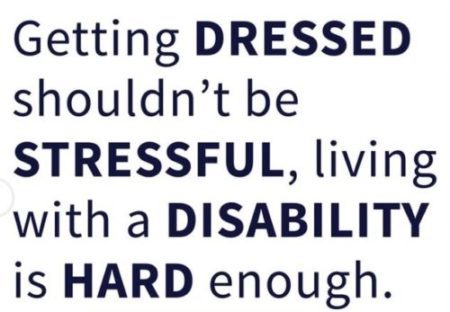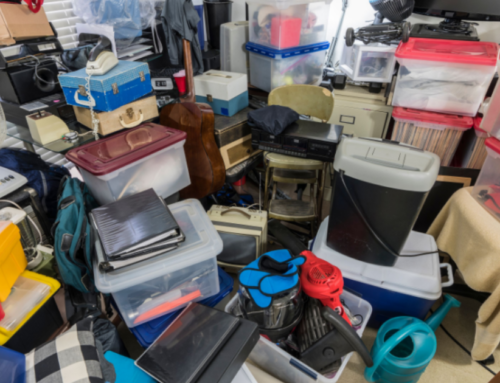As leaders in the home care industry, we are always on the look-out for products that enhance independence, safety, and quality of life for those we serve. An exciting trend we’re seeing is manufacturers re-tooling existing products or creating new products specifically to address the needs of those with limited mobility, disability, dementia and the needs of the people who care for these individuals. For those of us who specialize in caring for others, this shift is especially exciting as we know firsthand the positive impact that enhanced ease, safety, and comfort can have for all involved.
Getting dressed is one of the most common tasks that we all perform on a daily basis. Losing the ability to do so independently can be one of the most frustrating experiences for those suffering from the onset of chronic disease or impact from an injury. Don Horton, an assistant coach for the North Carolina State College football team, found himself in such a predicament.
At just 48-years old, the effects of Parkinson’s disease were taking hold. In the locker room after a game one his young players at the time, quarterback Russell Wilson (now of the Seattle Seahawks), watched as the coach struggled to change his clothes and stepped in to help button his shirt. When Coach Horton later shared the humbling experience with his wife, Maura, she began researching adaptive clothing. Not finding what she was looking for, she closed her magnetic iPad case and had an epiphany. Magnets, she realized, could make the process of putting on or taking off a shirt easier. From that epiphany, the brand MagnaReady was born. The North Carolina retailer sells a line of clothing with this now-patented feature, credited with restoring some of Coach Horton’s ability to independently pursue his daily routine.
Many mainstay brands such as Zappos, Van Heusen and Target are moving into this field as well by offering back-closure garments, reducing pressure points in garment construction, and designing diabetic footwear. Gillette, the men’s razor manufacturer, introduced a razor designed to be used by a caregiver instead of the individual. Check out a video of the innovation here. For those who suffer from cognitive impairment and may disrobe at inappropriate times, locking mechanisms on clothing help ensure clothing remains in place. Discreet accommodations for incontinence include clothing with openings that allow for the changing of a brief while someone is bed-bound.
Family Resource isn’t affiliated with any of these resources – we merely applaud the efforts to help those who suffer from disease or disability maintain as much dignity and independence as possible. As the rapid increase in the population of older adults in America continues, we are hopeful that “necessity is the mother of invention” rings true – bringing forward additional modifications and innovation to meet the needs of that population in new, and frankly better, ways. Unfortunately, many people do not avail themselves of these solutions because, often as is the case with home care, they are unaware of the options that exist. As our name says, our commitment is to be a resource and as such, we’ve assembled a short list of adaptive solutions and webpages that may help those who help those suffering from a disability. This research is offered with the caregiver in mind.
Adaptive Products
- Zapppos.com – search keyword “adaptive”
- Target.com – search keyword “adaptive”
- Magnaready.com – adaptive clothing
- gillettetreo.com – razors designed to help a caregiver do the shaving
- silverts.com – adaptive clothing and footwear
- caregiverproducts.com – adaptive daily living aids
- carezips.com – pants to assist with adult incontinence
- buckandbuck.com – traditional and adaptive clothing for seniors






